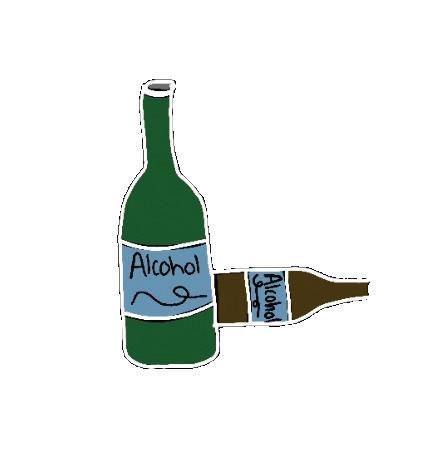
5 minute read
Walking the Walk
by Averie McGraw & Mallory Swope staff writer & editor-in-chief
Defining the dangers of addiction through a firsthand account of the direct effects of the disease
Advertisement
ddiction is a disease that has been ravaging communities near and far unrelentlessly for years now, taking its toll on people of all social statuses and backgrounds. Whether it be a teenager exposed to hard drugs for the first time at a high school party or an opiate prescription that led to a dependency, addiction lies dangerously at the tips of everyone’s fingers. When people get their hands on drugs and alcohol, they often feel instant gratification. All of the problems in the world simply don’t matter anymore as they float away from the perception of the user, but little does this person realize those problems are only temporarily gone and will be waiting for them as soon as they return to sobriety. It’s this freeing feeling that often convinces people that the dangers of addiction don’t apply to them. These people, however, are wildly incorrect. Unlike most diseases, addiction creates pleasure in the human body versus pain. In some cases, substance users can even be under the assumption that they are able to perform better under the influence. Because of this, they crave their preferred substance more and can’t let go of the high. According to the National Institute on Drug Abuse, tobacco, alcohol, and opioids are a fatal trinity; throughout the entire drug and alcohol
Aindustry, no substance kills more per year than these three. For young brains, substance abuse can mean stunted development that will never be completed even if sobriety is achieved. For many years now, vaping has become an addiction extremely prevalent to Central’s community of young, developing teenagers. Students sneak off to the bathrooms or remote parts of campus, concealing their addiction just as they conceal their paraphernalia. These teenagers are laying the groundwork for addiction to set in very early in life, and their disease will only grow more se“This disease took me as low as I could possibly go.” vere with time. For these students, the environmental factors they are surrounded by often create an idea in their heads that their addiction makes them more popular or relatable. Like any other disease, addiction can be caused by several different things, but it is primarily caused by genetics and environment. Children who have parents or other family members who have suffered from addiction are more likely to become addicted to a substance at some point in their life, but even just being near substances can be enough to initiate addiction for teenagers. For David Cantrell, genetics predisposed him to the dangers of heroin and alcohol and caused the formation of an incessant addiction at only 13 years old. Growing up in a
Graphics: A. McGraw & M. Swope

family addicted to various substances, Cantrell’s disease was only encouraged by the surrounding environmental factors. This is not to say, however, that someone who lacks a family history of addiction is safe to experiment with substances free of consequences. Drugs and alcohol contain chemical components that release dopamine, the “feel good hormone” in the body, that create a sense of pleasure and serenity. This then creates a craving for more dopamine release, and eventually the excessive release becomes a necessity for the body to function properly. Despite feeling euphoric, the natural dopamine production will no longer be functional and will lead to a dependence on substances capable of boosting hormone levels. Addiction can devise a sort of false reality for addicts in the sense that they might think the people surrounding them are witnessing the same sense of euphoria they are experiencing, when in reality these people are often witnessing a much more bitter and temperamental person. Cantrell was just one of very few addicts who was able to make the distinction between the alternate reality he was constructing while riding out the highs and the person he was actually presenting himself as; “this disease took me as low as I could possibly go,” Cantrell reflects. Through his journey on the road to recovery, he was able to pick up the pieces of his life that had shattered with years of jail time and struggle and put them all back together in the form of the successful, courageous man he is today. “I like David today, I like who I am, I like what I do. I like my lifestyle,” Cantrell states, “So to sit here and tell you that today I love myself is the greatest news I’ve ever heard.” While recovery is primarily geared towards moving away from substance abuse, many addicts learn that defining their self-worth is almost just as important. Without a sense of self-worth, addicts often find themselves in situations where the importance of achieving the next high outweighs the role of moral principles. This often leads to troubles with the law and prison sentences for possession or being under the influence; Cantrell learned this lesson the hard way, and thus began the cycle of jail and prison sentences that landed him behind bars for nearly 20 years. “I’ve been a convict in four different prisons, I don’t know how many county jails, I’ve been shot twice, I’ve been stabbed once . . . If I didn’t [succeed] with recovery, I would have had to go back to prison for ten more years,” Cantrell explains. It was this threat that finally sent Cantrell to various recovery-driven programs. Shortly after pledging his sobriety, Cantrell “fell in love with recovery, this lifestyle” and discovered he “was more ashamed of being drunk than being sober.” Today, Cantrell carries himself with pride knowing that he was able to overcome a disease that has killed more people than the Vietnam War. Cantrell is also able to carry with him the lessons he learned from addiction and the knowledge of what other addicts go through to overcome the disease. He is able to walk the walk that not many addicts are able to say they could: the walk away from the near-fatal lifestyle he lived for so many years. The walk past the liquor aisle in the grocery store. The walk past the Boardman River where his sobriety was nearly jeopardized one year into recovery. The walk toward helping other addicts make the choice to better themselves. David Cantrell has truly lived through all of the components of addiction. //










